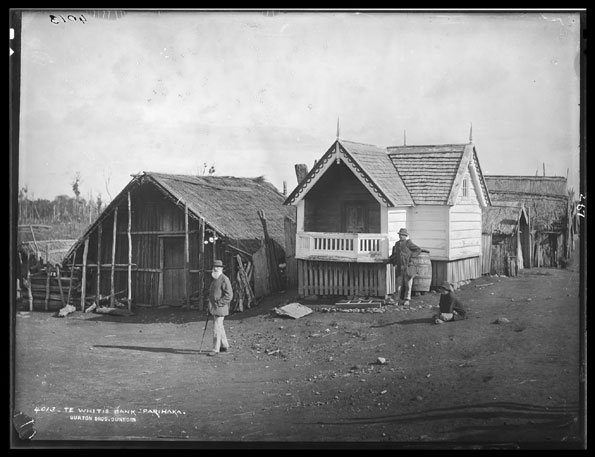 'Te Whiti's bank, Parihaka', c1887
'Te Whiti's bank, Parihaka', c1887
TLF ID R5112
This is a black-and-white photograph from Parihaka, Taranaki taken around 1887. Traditional Mäori whare or houses surround a bank built in European-style architecture, using painted, sawn timber and with foundations, a cross gable tiled roof with finials, and a covered balcony with a balustrade at the front. A man is leaning next to the bank and another person sits cross-legged nearby. A short ladder is on the ground in front of the balcony. Another man with a white beard and walking stick is walking away from the bank. The photograph is the work of the Burton Brothers and measures 16.5 cm x 21.5 cm.
